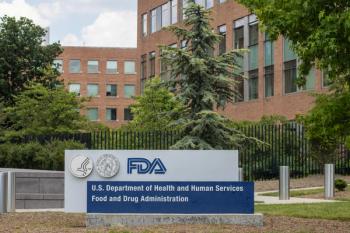Pharmacy Practice in Focus: Health Systems
- November 2025
- Volume 14
- Issue 6
Billions at Stake: 340B Program Integrity and Sustainability in 2024–2025
Key Takeaways
- The 340B program supports safety-net hospitals but faces challenges like litigation, payment offsets, and pharmacy restrictions.
- HRSA has intensified audits to ensure program integrity, focusing on diversion, duplicate discounts, and eligibility verification.
The program’s legitimacy rests on transparency, audits, and ensuring benefits reach vulnerable patients.
Introduction
The 340B Drug Discount Program, authorized in 1992, permitted eligible hospitals and clinics to purchase outpatient drugs at discounts of 25% to 50% below market.1,2 Designed to stretch scarce resources for safety-net providers, the program has grown to more than 50,000 covered entities (CEs) and 32,000 contract pharmacies.3 Although it supports financial safety-net hospital viability, the program faces challenges, including litigation, Medicare payment offsets, contract pharmacy restrictions, and rebate model reforms.4-6
Sustainability Under Financial Pressure
After a 2022 Supreme Court decision reduced 340B drug Medicare reimbursements, hospitals received repayments for prior underpayments and restored future payments to the average sales price up to 6%.⁷ However, CMS cut nondrug Outpatient Prospective Payment System (OPPS) reimbursements to preserve budget neutrality.4,7 Hospitals welcomed legal victory but now contend with ongoing margin pressures.4
For decades, 340B revenue has subsidized uncompensated care, oncology, behavioral health, and rural outreach.8 Organizations increasingly depend on remedy payments, but relying entirely on this stream risks overestimating long-term community support once offsets are considered.7
Program Integrity
340B program integrity underpins overall legitimacy. To ensure integrity, the Health Resources and Services Administration (HRSA) intensified audits from 2024 to 2025, focusing on diversion, duplicate discounts, and eligibility verification.9 This was after hospitals saw an approximate 60% drop in audit findings from 2018 to 2022, suggesting stronger internal controls. By contrast, more than half of manufacturers audited faced adverse findings, often requiring repayments.10,11 The American Hospital Association argued that this imbalance requires greater scrutiny of drugmakers.12 Public posting of audit outcomes heightens compliance stakes; governance is now critical for sustainability.9
Duplicate Discounts and Medicaid Coordination
Avoiding duplicate discounts (ie, when a drug simultaneously receives a 340B discount and Medicaid rebate) remains a focus. Medicaid managed care expansion has intensified carve-in/carve-out disputes, with frequent false-positive audit flags from pharmacy benefit manager (PBM) misalignment. HRSA’s 2024 integrity update emphasized standardized 340B identifiers and centralized exclusion protocols.13
One controversial development is HRSA’s rebate model pilot, which is scheduled to be phased in for 2026.14 Under this model, CEs purchase drugs at market rates and claim rebates. Supporters view it as curbing duplicate discounts and increasing transparency, but critics worry that delayed payments could destabilize struggling providers, especially rural hospitals, with more than 400 already at risk of closure.14-16 For many institutions, 340B savings remain vital to sustaining narrow margins and preventing closures.
Unlike prior programs, the HRSA pilot requires manufacturers to pay rebates within 10 days of claims and bars denials based on diversion or Medicaid duplicate discounts. Rebates may be denied only if they have already been provided for the same claim or if a lower Inflation Reduction Act (IRA) price was granted, with all denials requiring supporting documentation. Manufacturers cannot pass administrative costs to CEs and risk removal for violations.14
Contract Pharmacy Fragmentation
Contract pharmacies, responsible for much of the program expansion, now face mounting restrictions. In 2024, the US Court of Appeals for the District of Columbia Circuit upheld manufacturer limits, whereas a federal court struck West Virginia’s mandate requiring discounts. Conversely, Arkansas and Mississippi upheld state protections, creating a patchwork system. As Maxik et al cautioned, institutions entering the program must weigh compliance burdens and shrinking margins, particularly where restrictive laws reduce participant value when already under financial stress.3
Criticism and Policy Challenges
Critics argue that broad participation enables misuse, as hospitals and pharmacies profit from drug resale without extending discounts to patients.17 A Wall Street Journal editorial estimated that $66 billion—which is approximately 10% of brand-name drug spending—went to hospital gains, suggesting mission drift.17,18 Studies show 340B sometimes subsidizes unrelated operations vs lowering patient costs.17
The 2024 Sustain 340B Act sought to secure safety-net viability, clarify pharmacy and eligibility rules, require manufacturers to participate in Medicaid and Medicare Part B, and strengthen HRSA’s authority over discounts and transparency. Meanwhile, the IRA introduced Medicare price negotiations, complicating compliance.19
On September 10, 2025, the US House of Representatives reintroduced the 340B Access Act to reform and safeguard the program. It emphasizes patient access, contract pharmacy clarity, PBM oversight, and transparency. Provisions include the following20:
- Ensuring patients gain affordable medications and services in underserved areas
- Preserving broad contract pharmacy access, including specialty and mail order
- Expanding specialty providers’ eligibility
- Preventing middlemen from diverting savings
- Increasing transparency and accountability
Empirical Evidence and Accountability
It is estimated that 340B accounts for approximately 1% of US health spending, implying sustainability.3 Watts et al reported revenues supported expanded health center services,21 whereas Nordyke et al linked higher margins to improved low-income patient outcomes.22 However, DiGiorgio et al found hospitals benefit more than patients.23 Courtemanche et al noted methodological barriers in isolating causal impact.12
Future Considerations and Conclusion
Long-term sustainability hinges on demand balancing. Critics stress that no legal mandate requires savings to reduce patient costs.23 Patient advocates counter that weakening the program would devastate rural and underserved access.16,23,24 As of 2025, sustainability is constrained by OPPS offsets, contract pharmacy restrictions, and rebate uncertainty. The program’s legitimacy rests increasingly on transparency, audits, and ensuring benefits reach vulnerable patients—not solely hospital finances.
REFERENCES
The 340B Drug Pricing Program. Association of American Medical Colleges. July 1, 2022. Accessed October 1, 2025.
https://www.aamc.org/news/340b-drug-pricing-program Veterans Health Care Act of 1992, Pub L No. 102-585, 106 Stat 4943 (1992). Accessed October 1, 2025.
https://www.govinfo.gov/content/pkg/STATUTE-106/pdf/STATUTE-106-Pg4943.pdf Davis R, French M, Shafer BM, Pallotta J. The 340B program in 2024: a tumultuous year in review. Quarles & Brady LLP. December 30, 2024. Accessed October 1, 2025.
https://www.quarles.com/newsroom/publications/the-340b-program-in-2024-a-tumultuous-year-in-review Baker CW, Lanham SW, Coustasse-Hencke A. Is the 340B hospitals battle at the Supreme Court over? Pharmacy Times. November 23, 2022. Accessed October 1, 2025.
https://www.pharmacytimes.com/view/is-the-340b-hospitals-battle-at-the-supreme-court-over- Maxik K, Kimble C, Coustasse-Hencke A. Consider real costs before implementing a 340B program. Pharmacy Times. September 29, 2020. Accessed October 1, 2025.
https://www.pharmacytimes.com/view/consider-real-costs-before-implementing-a-340b-program 340B 101: how the Health Center Program and the 340B program intersect for health equity. National Association of Community Health Centers. Accessed October 1, 2025.
https://www.nachc.org/wp-content/uploads/2024/01/340B_Intersect-for-Health-Equity.pdf Hospital Outpatient Prospective Payment System (OPPS): remedy for the 340B-acquired drug payment policy for calendar years 2018-2022 final rule (CMS1793-F). Centers for Medicare & Medicaid Services. November 2, 2023. Accessed October 1, 2025.
https://www.cms.gov/newsroom/fact-sheets/hospital-outpatient-prospective-payment-system-opps-remedy-340b-acquired-drug-payment-policy Knox RP, McLemore EC, Prapassorn P, et al. Outcomes of the 340B Drug Pricing Program: a scoping review. Milbank Q. 2023;101(4):901-923. doi:10.1001/jamahealthforum.2023.3716
Program integrity. Health Resources & Services Administration. Reviewed September 2025. Accessed October 1, 2025.
https://www.hrsa.gov/opa/program-integrity Program integrity: FY18 audit results. Health Resources & Services Administration. Reviewed November 2023. Accessed October 1, 2025.
https://www.hrsa.gov/opa/program-integrity/fy-18-audit-results Program integrity: FY22 audit results. Health Resources & Services Administration. Reviewed July 2025. Accessed October 1, 2025.
https://www.hrsa.gov/opa/program-integrity/fy-22-audit-results Courtemanche CJ, Garuccio J. What economists should know about the 340B Drug Pricing Program. National Bureau of Economic Research. May 2025. Accessed October 1, 2025. https://www.nber.org/system/files/working_papers/w33788/w33788.pdf
Medicaid program; misclassification of drugs; program administration and program integrity updates under the Medicaid Drug Rebate Program. Federal Register. September 26, 2024. Accessed October 1, 2025.
https://www.federalregister.gov/documents/2024/09/26/2024-21254/medicaid-program-misclassification-of-drugs-program-administration-and-program-integrity-updates 340B Health responds to HRSA 340B Rebate Pilot Program. 340B Health. News release. July 31, 2025. Accessed October 1, 2025.
https://www.340bhealth.org/newsroom/340b-health-responds-to-hrsa-340b-rebate-pilot-program/ Dyrda L. 37% of hospitals still losing money. Becker’s Hospital Review. February 27, 2025. Accessed October 1, 2025.
https://www.beckershospitalreview.com/finance/37-of-hospitals-still-losing-money/ Topchik M, Balfour B, Brown T, Wiesse A, Pinette M. Unrelenting pressure pushes rural safety net crisis into uncharted territory. Chartis. Accessed October 1, 2025.
https://www.chartis.com/sites/default/files/documents/chartis_rural_study_pressure_pushes_rural_safety_net_crisis_into_uncharted_territory_feb_15_2024_fnl.pdf Conti RM, Bach PB. The 340B drug discount program: hospitals generate profits by expanding to affluent communities. Health Aff (Millwood). 2014;33(10):1786-1792. doi:10.1377/hlthaff.2014.0540
Desai S, McWilliams JM. Consequences of the 340B Drug Pricing Program. N Engl J Med. 2018;378(6):539-548. doi:10.1056/NEJMsa1706475
Protect the 340B Drug Pricing Program. Association of American Medical Colleges. Accessed October 1, 2025.
https://www.aamc.org/news/protect-340b-drug-pricing-program Carter, Harshbarger introduce legislation to ensure access and transparency in 340B Drug Pricing Program. US Representative Buddy Carter. News release. September 10, 2025. Accessed October 1, 2025.
https://buddycarter.house.gov/news/documentsingle.aspx?DocumentID=15906 Watts E, McGlave C, Quinones N, Bruno JP, Nikpay S. 340B participation and safety net engagement among federally qualified health centers. JAMA Health Forum. 2024;5(10):e243360. doi:10.1001/jamahealthforum.2024.3360
Nordyke RJ, Motyka J, Patterson JA. The association of 340B program drug margins with covered entity characteristics. Inquiry. 2025;62:00469580251324051. doi:10.1177/00469580251324051
DiGiorgio AM, Winegarden W. Reforming 340B to serve the interests of patients, not institutions. JAMA Health Forum. 2024;5(7):e241356. doi:10.1001/jamahealthforum.2024.1356
Kishore S, Nayak RK, Kesselheim AS. 340B—where do we go from here? JAMA. 2023;330(7):593-594. doi:10.1001/jama.2023.11056
Articles in this issue
about 2 months ago
Tips for Using AI Tools Responsibly During Pharmacy SchoolNewsletter
Stay informed on drug updates, treatment guidelines, and pharmacy practice trends—subscribe to Pharmacy Times for weekly clinical insights.















































































































































































































